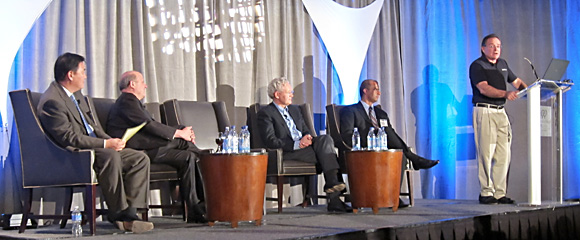First, lets review the business model transitions EDA has seen. We started with perpetual licensing which is a software license for the life of the product. EDA companies did their best to change product names to get incremental revenue above and beyond the yearly 15% maintenance fee but that is a dead end business model for a confined software industry like EDA.

The concept of a 3-year time-based license business model came from Avant! (definitely not a status quo company). I salute the person who came up with it, it literally saved EDA. I doubt it was Gerry Hsu (Avanti CEO) but he most certainly took credit for it. I sold time-based licenses at Avanti and I can tell you it was one of the reasons Avant! did so well. Business models are everything.

The next EDA business model was the worst idea ever, flexible or all-you-can-eat software licensing. Cadence brought this scourge on the industry and I believe it was then Cadence CFO Ray Bingham who did it. I can only guess that this was a Cadence competitive shot at Aart de Geus because Synopsys was gaining market share fast. Of course it almost killed Cadence and they are still recovering from it years later. Jack Harding was Cadence CEO at the time and he took the fall for it. I credit Ray Bingham for dodging that bullet and actually getting promoted to CEO as a result of this industry crushing mistake.

Unfortunately Synopsys has taken the flexible license (Enterprise) model to a whole new level and has used it against Cadence and EDA in general ever since. At the EDAC CEO panel Aart clearly stated to me that he does not believe success based business models will work in EDA and belittled my suggestion that EDA reinvent itself using Apple and Google as examples.

Okay, here is the funny part, I love the irony here. Jack Harding left Cadence and started eSilicon. eSilicon applied a success based business model (the foundry business model actually) to semiconductor design services, a business that both Synopsys and Cadence failed at. Jack and I worked at Zycad years ago and I can tell you he is not a “status quo” type of guy like the current EDA CEO’s. And for those of you who think eSilicon is NOT successful think again, they are North of $100M in revenue and could be as high as $150M, believe it. The other success based business model in our industry is IP. Unfortunately, now that Synopsys is an “all-you-can-eat” IP company, that will also change so beware ARM and other success based IP companies!

So you have to ask yourself why is Synopsys limiting the financial growth of our industry? The answer of course is that Synopsys is so caught up in the competitive aspect of our business, crushing others, Synopsys cannot see past it (my opinion). Correct me if I’m wrong, you can join the discussion HERE.
EDAC CEO Panel Photo by Joe Hupcey III
lang: en_US






